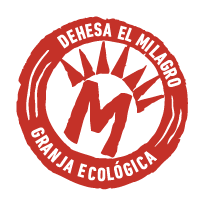Ovine
Our sheep belong to the Talaverana breed, a native kind of sheep that is in danger of extinction. This sheep is the result of crossing over centuries the Merino and La Mancha breeds, obtaining very specific lambs with an excellent and very tender meat.
The most remarkable characteristics of these animals are:
– Their high rusticity, which allows them to endure well in areas with high temperatures in summer and where periods of abundance of food coexist with periods of scarcity.
– They have a great herd instinct which favours grazing in large herds.
– Females are great breeders, they can go into gestation at any time of the year. It is also worth noting that twin births occur frequently when they are properly treated and they enjoy favourable conditions.
– They are large producers of milk, a capacity inherited from their Manchega ancestors. This production contributes to the growth of the young lambs in the first months of life, when their diet is exclusively breast milk.
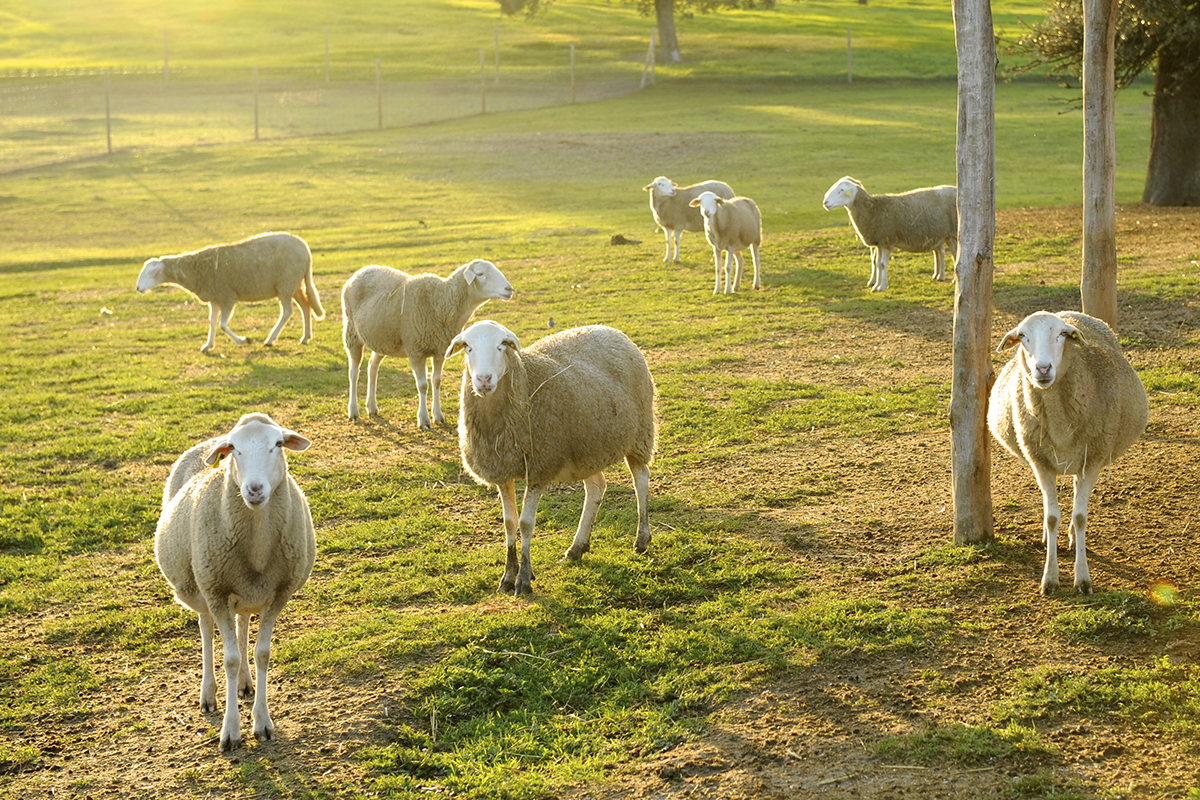
350 sheep are grazed with the same system as cattle, but they have a different diet. This helps us to control that all the plants are used up in the same way at the same time. Its grazing is less selective and it is carried out at a different altitude than that of cattle. A sheep eats less selectively than a cow and therefore favours weed control. Besides, cows have a different bite length so they eat different plants. Both species complement each other perfectly.
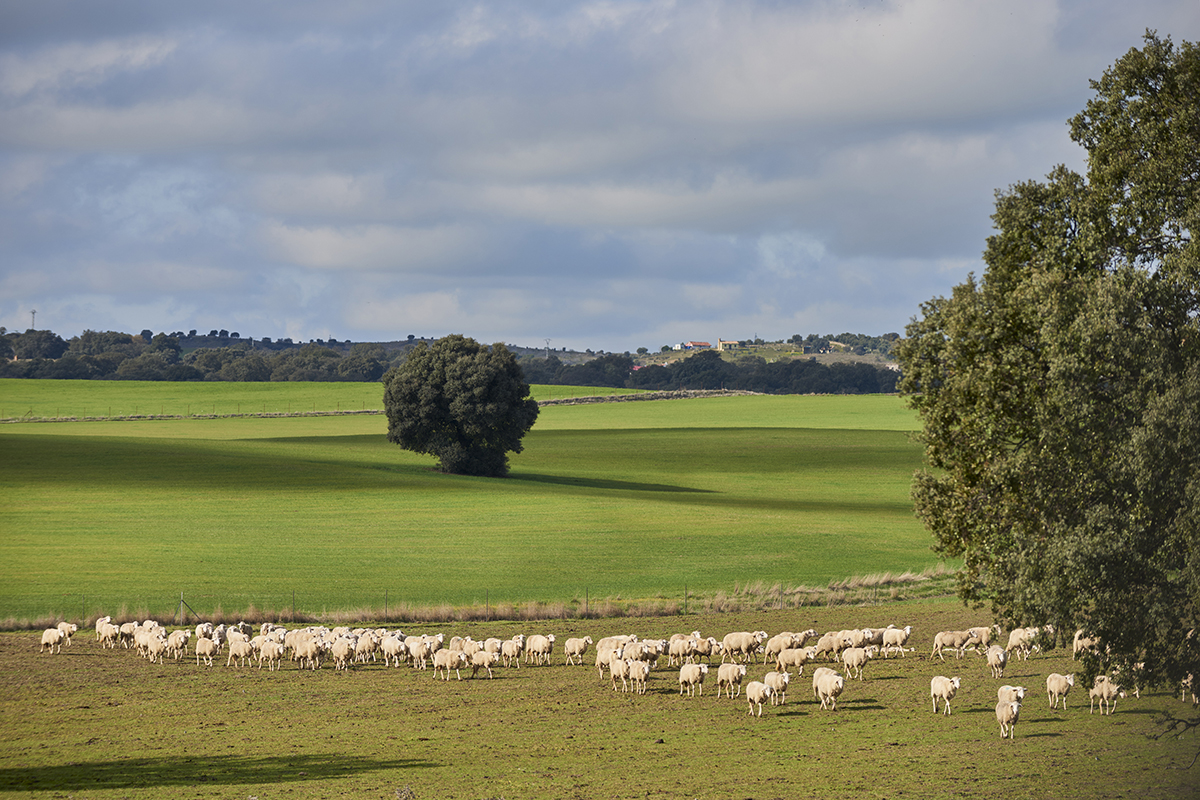
Livestock is continuously held in the field with free access to pasture.
They enjoy free-range breeding, as cattle, so it becomes necessary to rotate pastures in order to improve soil conditions, taking advantage of the synergy between species.
The presence of both animals, with their different sizes, means that the contributions of organic matter are staggered and that the presence of the animals in the pastures helps with trampling, disintegration and its incorporation to the soil more quickly.
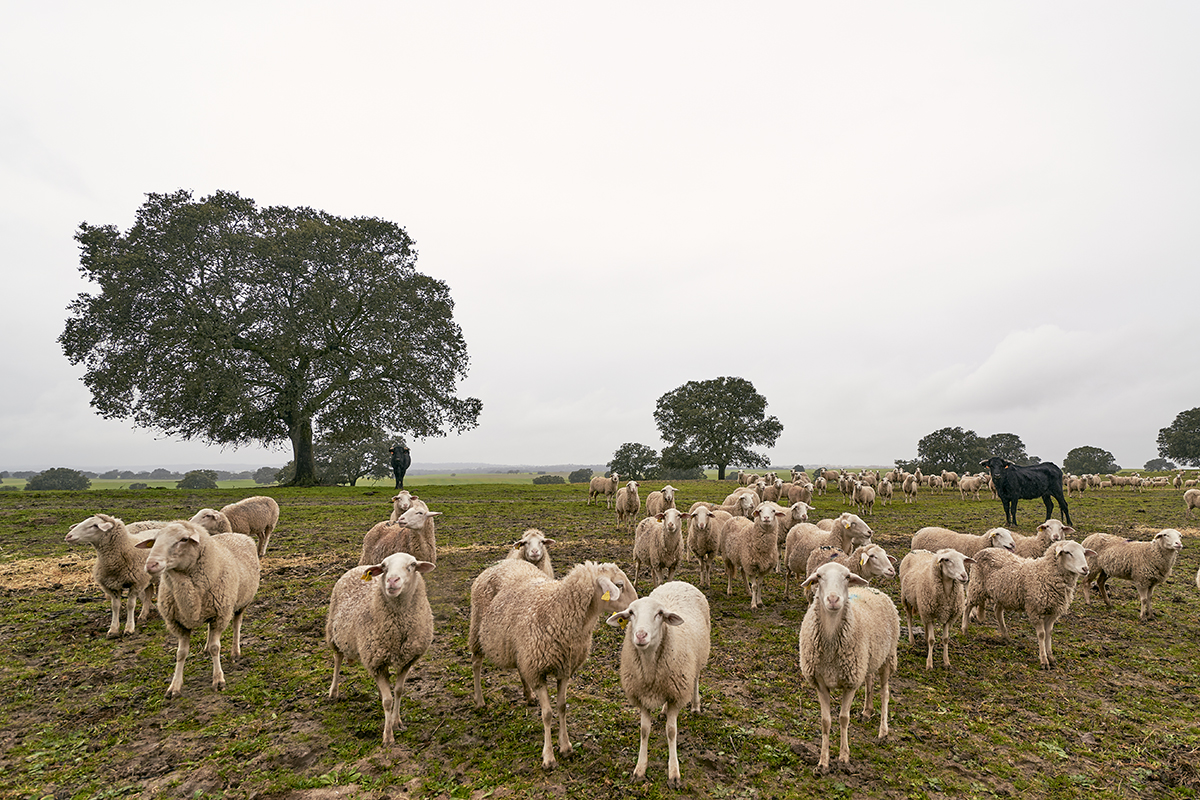
Certified pastures and forages are the basis of the diet. They do not come from GMO seeds or crops, and they have not been treated with herbicides or fungicides.
The animals are treated with homeopathy and herbal medicine, strictly complying with all mandatory regulations. Animals are forced to leave the ecological circuit when they have to be treated with an antibiotic by veterinary prescription. The use of drugs is prohibited except for the mandatory ones defined by the official veterinary systems.
Despite that the regulation approves artificial insemination under some conditions, in Dehesa El Milagro natural mating is used. We have several stallions that are put in the same place with the ewes at different heat times to favour the breeding of lambs throughout the year. Their meat is excellent, but their breeding requires a lot of care.
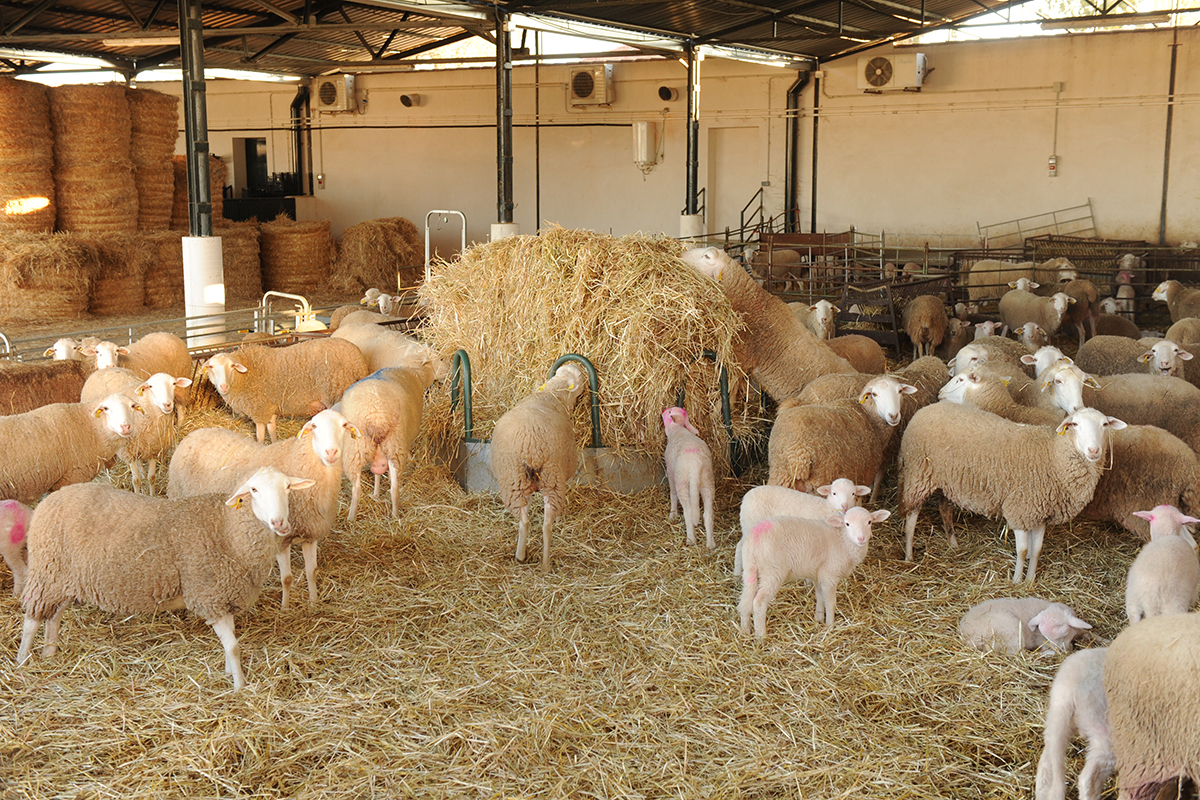
The herds, in the farrowing season, are kept close to the sheepfold, to protect both the mother and the offspring as soon as lambs are born. In this type of livestock, it is very important to control whether the mother takes care of her offspring, since sometimes, the first-time mothers do not take care of them adequately. That is why it is important to be attentive to facilitate grooming. It is essential to encourage them to suckle colostrum, which is the first milk they suckle, since it provides them with essential defences in the first months of life. It may happen that the mother dies. If that occurs, we do everything possible to find a surrogate mother with good milk. Although this is difficult, it sometimes happens. The last resort is to use bottle feeding. In the case of double births, you have to be especially vigilant and move the offspring and the mother to the sheepfold where they will receive special care.
